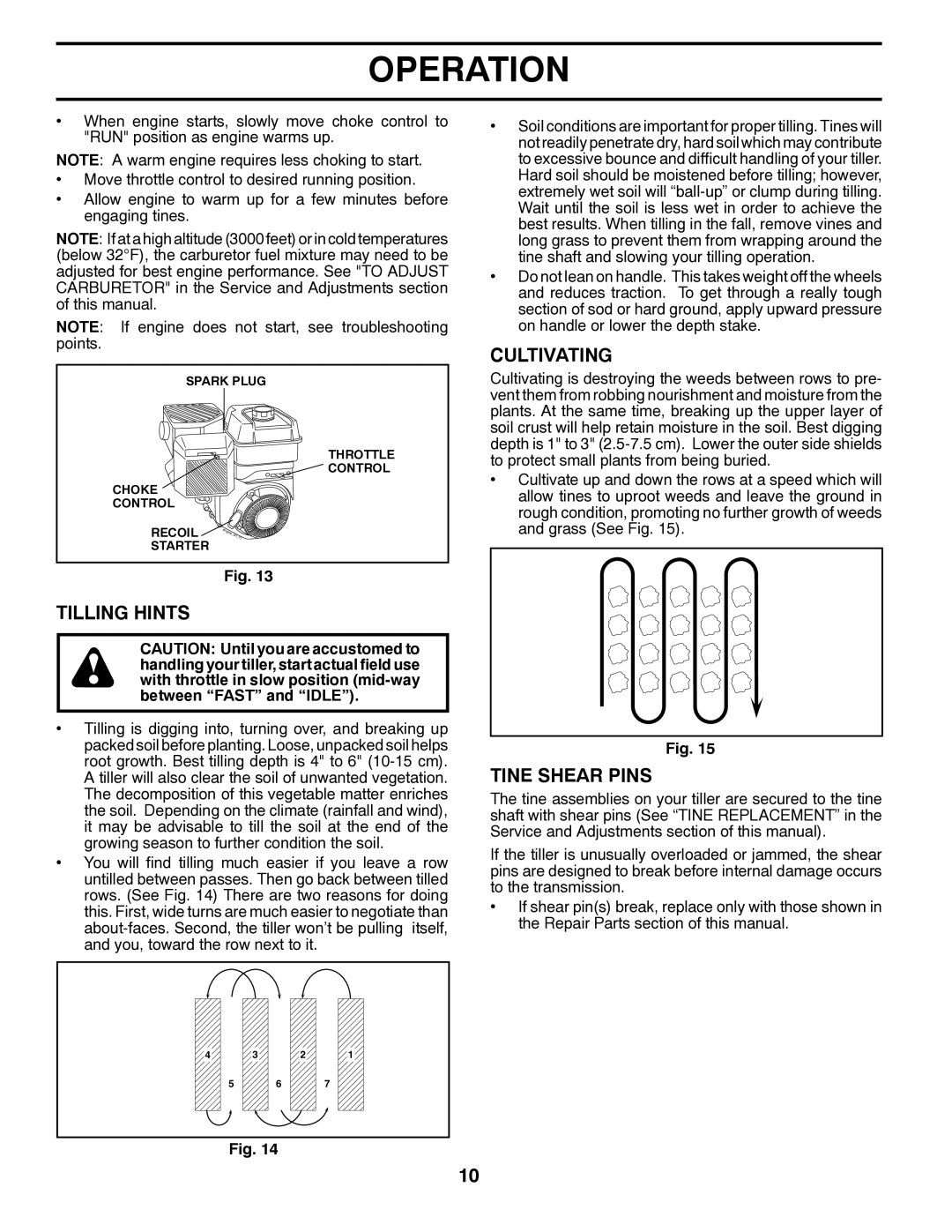RT900, 432121, 96092002100 specifications
The Poulan 96092002100, also known by its model number 432121 and referred to as RT900, is a versatile piece of outdoor power equipment engineered to meet the needs of both residential and professional users. This product falls within the category of string trimmers, offering a perfect blend of efficiency and ease of use for tackling grass, weeds, and overgrown areas around the yard.One of the main features of the Poulan RT900 is its powerful 25 cc, 2-cycle engine, which provides ample cutting power while maintaining a lightweight design. This engine strikes a balance between performance and fuel efficiency, allowing users to complete tasks without the frequent need for refueling. The trimmer also employs a simple, user-friendly starting mechanism, making it accessible for individuals with varying levels of experience.
The RT900 is equipped with a dual line bump feed head. This feature allows users to easily advance the cutting line by bumping the head against the ground, thereby reducing downtime and increasing productivity. The dual line also enhances the cutting efficiency, ensuring that thicker grass and tougher weeds can be managed effortlessly.
Another notable characteristic of the Poulan RT900 is its adjustable assist handle, designed to provide optimal comfort during use. This feature allows users to customize the handle position to suit their height and grip preferences, significantly reducing user fatigue during extended operation. The lightweight construction of the trimmer further contributes to ease of maneuverability, ensuring that users can navigate around obstacles with minimal effort.
In addition to performance and comfort, the RT900 incorporates anti-vibration technology. This innovation reduces the amount of vibration transmitted to the user's hands and arms, promoting a more enjoyable and less physically taxing user experience. This is particularly beneficial for those who may be using the trimmer for prolonged periods.
Overall, the Poulan 96092002100,432121,RT900 is a robust and practical string trimmer that combines power, comfort, and advanced features. Its combination of a reliable engine, efficient cutting system, and user-friendly design makes it an ideal choice for homeowners and professionals alike, enabling them to maintain their outdoor spaces with ease and precision.

